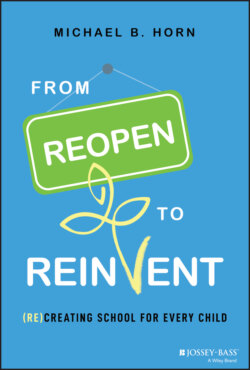Читать книгу From Reopen to Reinvent - Michael B. Horn - Страница 25
AUTONOMY
ОглавлениеExactly how independent must a group be for it to be able to reframe a threat as an opportunity, escape the gravitational pull of the existing organization, and innovate successfully? Gilbert's research highlights the benefits of an organization creating a separate entity that has ties back to the parent group for the sharing of certain resources. To calibrate more precisely what this might look like, here is a framework to help guide school leaders.
Every organization has resources, processes, and priorities.
Think of resources as being things like teachers, curriculum, classrooms, technology, books, and so forth.
Processes are ways of working together to address recurrent tasks in a consistent way. They cover everything from how teachers take attendance to how they lesson plan and teach to how the school creates its master schedule and conducts professional development.
Priorities are what an organization must accomplish.7
Once you understand an organization's resources, processes, and priorities, you can see what it is capable of doing—but also what it is incapable of doing. Any innovation that fits into an organization's resources, processes, and priorities will be readily adopted, but any innovation that doesn't fit neatly into all three will either be twisted and morphed to fit the organization's existing capabilities or ignored and rejected.
What's key when trying to reframe a threat as an opportunity is to create a new organization that has enough freedom to rethink a parent organization's resources, processes, and priorities. This doesn't mean that it will discard all of those things. It may very well borrow things from the parent organization, particularly resources, which are the easiest of the three to share without ruining an independent group's chances of creating something wholly new.
If total transformation is the goal, then the rule of thumb is that a leader must not allow the parent organization the ability to impose its existing resources, processes, and priorities on the autonomous group. The independent team must have the freedom to make the decisions as to what it will and won't take from the parent.8 The more freedom it has to rethink the parent organization's processes and priorities, the greater the level of innovation possible.
That means that the leader's job is twofold: to make sure the existing entity recognizes its critical role of continuing to execute on its priorities while the new group innovates and to protect the independent team.
